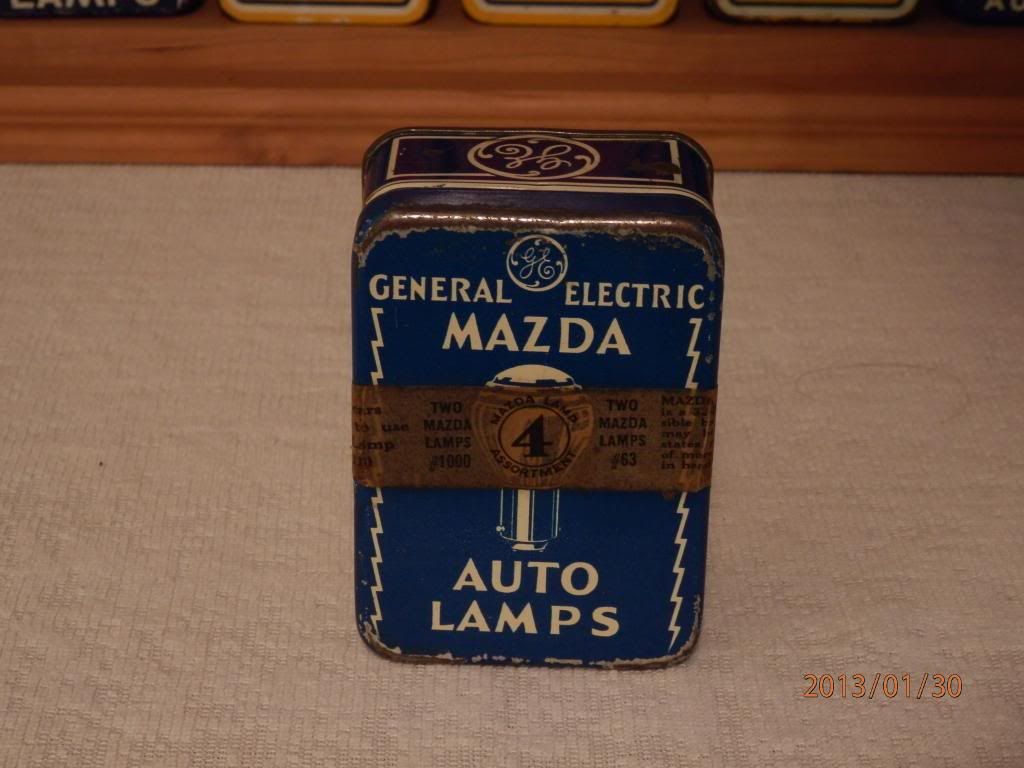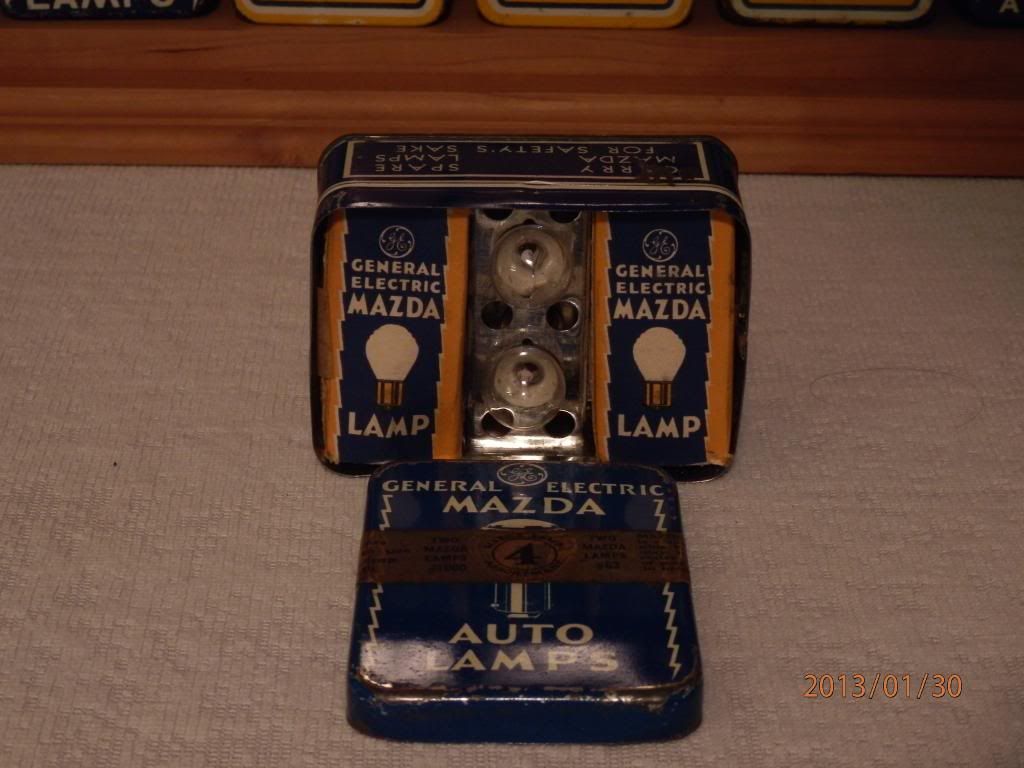Thanks everyone for the positive words and it's great to hear you're appreciation.
Now moving forward. I showed a picture earlier of tins that don't fit the normal sizes or shapes of the tin sizes already mentioned. The little square Westinghouse tin measures 2 13/16" square x 1 13/16" tall. The Eveready tube is 4 1/2" long x 1 1/2" in dia. while the "glass case" for Eveready is 5 1/4" at it's longest x 2 1/2" wide and 1 1/2" tall. The Osram is a British tin 4 1/16L x 2 7/8"W x 1 13/16"H. I have found markings by all the major tin can manufacturers of the day and even some smaller companies so the measurements given are the closest average sizes +/- 1/16" depending on the style of lid. I generally make my measurements across the bottom edges because these are the most uniform dimensionally from tin to tin. I also should mention that recently I came across another "tube" style tin from another bulb manufacturer but I was not able to attain it and at this point those are measurements that will be left with a question mark. Tung Sol is the company that marketed the tin.
When collecting these tins, I suppose there are 2 methods of madness to collecting. Those of us that are ultimately after completeness and those that aren't concerned with interiors. Either way is just fine. I myself find the challenge of collecting complete tins most interesting to say the least. I place a premium on a complete AND CORRECT tins with interior. After looking at and studying thousands of these, you tend to get a feel for what should be as opposed to what is. I liken this to pump collectors who are archivalists and like complete and whole pumps or quart can collectors who prize full unopened cans of oil. When I mention complete tins, I don't necessarily mean all original or to put it another way, contents and tin have been together since day one. Complete CORRECT tins is the goal. If you restore a pump and need parts from another pump to complete the build it is still a correct pump. Same concept....If I complete a tin with contents from another tin making it correct, this makes for a complete and correct tin. Remember, these tins were kits to be generally carried in the auto to replace bulbs as they blew. The tins themselves took a lot of abuse either in a glove box, under the seat, or where ever in the trunk on the early rough roads of the day. Bulbs got used, new one's were purchased to replace the replacements (not necessarily the same brand of bulb) and these were put into the tins for safe keeping until needed again. So mix and match was common, interior cardboard holders were often lost, many times tins found themselves on shelves with a host of loose bulbs in them or eventually repurposed for any kind of trinkets. Nice little tins with lids had all kinds of useful needs which makes collecting them at all challenging. Pictured below are examples I put together of improper interiors but not limited to. Of late I'm finding people making new sleeves, new inserts which are used to section the interiors and hold the bulb contents in place. Or if they have a case box of bulbs from another brand, they just place whatever brand they have in the tins to make them appear complete.
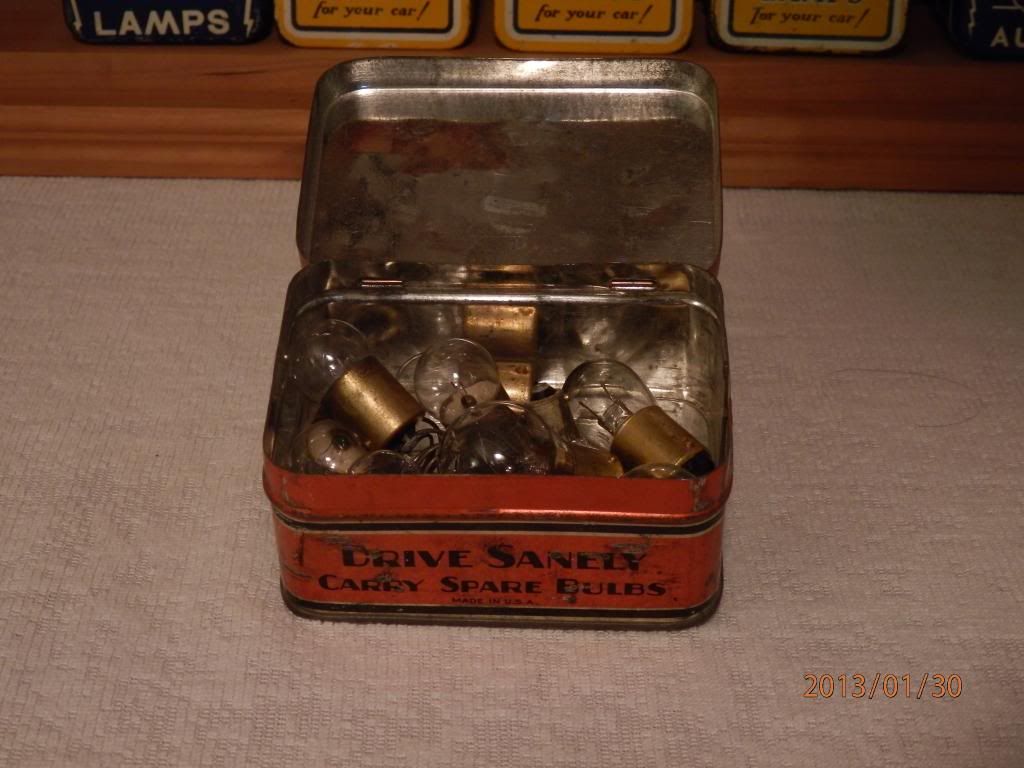
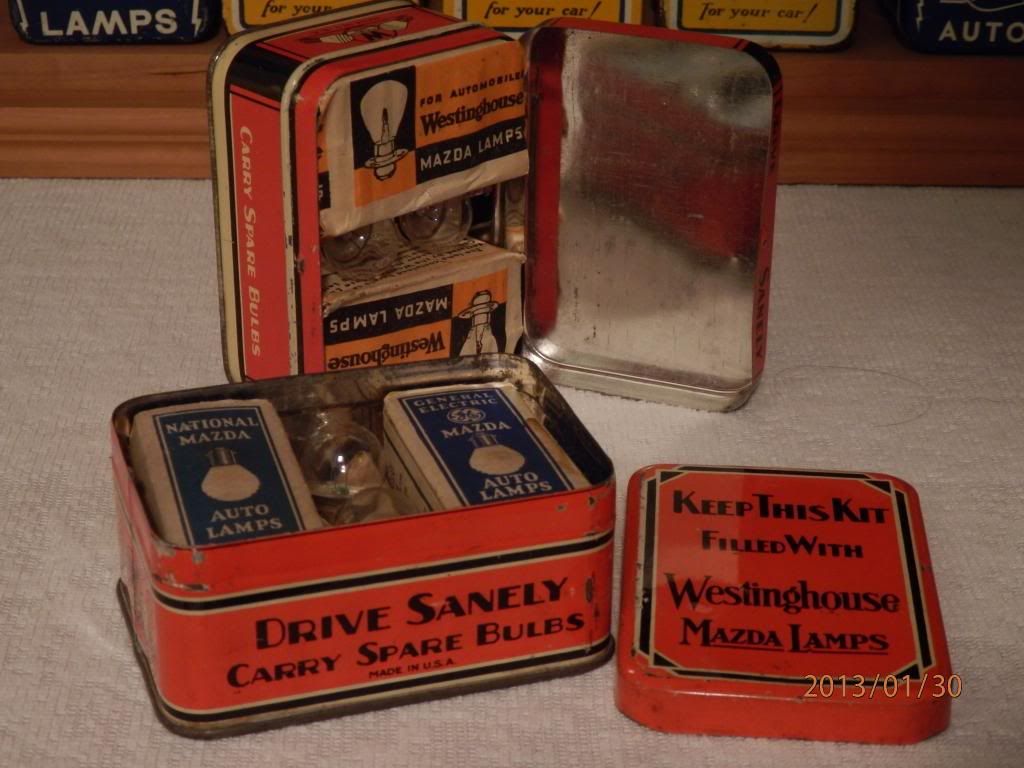
Most commonly you find mixed branding. Either mixed within the tin as the Westinghouse and GE National example above or completely wrong branding within, not matching the tin branding. People sell these tins all the time expressing that they are "with bulbs" or "complete" and expecting a premium price. In the end it boils down to this. It's about the tin and correctness. The bulbs themselves are secondary. A box of loose bulbs are completely useless to me as a tin collector unless I know someone who needs those bulbs. I will show complete/correct tins later on with each example that I currently have. It's very tough to come up with these tins so piecing together is acceptable. Make sure that bulb themselves are correct if part numbers on the tins are given.....usually this is on tins found with paper labels. A Tung Sol branded tin with Tung Sol branded bulb sleeves and GE bulbs is not correct. Every layer must match hence the reason for a premium on correct tins. Of the total tins in my collection, less than 10 are correct and complete.
CONDITION,
Condition ,
Condtion!!! Like anything else, this is the number one factor in how much I'm willing to spend. Rarity follows and desireability are next in determining value. It is not my intent with this guide to establish a market set of values. Prices on any given day can be all over the map. I will give an idea on expectations by showing a range of prices I have experienced which will include most collectible conditions. I can't stress enough that time and patience are key to putting together a comprehensive collection. I've missed out on tins thinking the condition was less then desireable only to lose the auction and then not see another for several years. The point here is that I'm willing to guide people to make an educated decision on what THEY are willing to pay or sell at but I'm not going to start setting market prices and create disappointments. I've always been a firm believer that homework, and watching what auction prices produce, are the best indicators as to current market values.
As a follow up, these tins were very utilitarian and they age anywhere (in the vast majority of cases) from 60 to 80 years old so time and treatment has not been kind to them creating very few excellent to near perfect examples. This creates the first challenge. Second, if you're after a true challenge, putting together complete/correct tins will be a lifetime of work. That's what keeps me going!!
I'll be showcasing these in groups. Group 1 will be bulb manufacturers. Group 2- (my favorite) auto parts dealers. Group 3- Auto manufacturers.
These tins could be found for sale (back in the day) in any number of places including gas stations, parts stores, and even general merchandise or hardware stores so marketing and display took many forms. We'll start with manufacturers because that was most likely where the tins got their start.
Of course GE started the whole Mazda thing so lets begin there. It's my belief that this was their first tin.
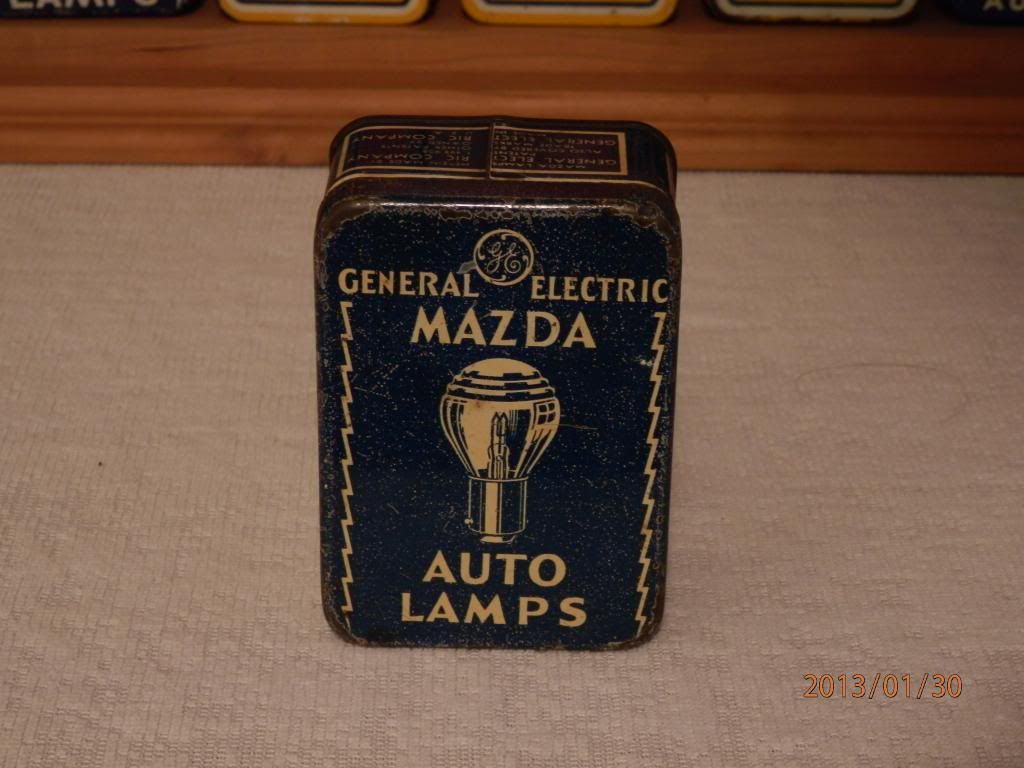
It's not known exactly if all tins were given a paper seal which came with a kit number. Kit numbers represented a specific bulb grouping by part numbers. As of this time, I am aware of kits 1-7 and I've only ever seen #7 once. The most common seem to be on the #3 thru #5 range. I noted on tins with paper labels, some kind of glue or residue usually lasts long enough to indicate it was there at one time. Most of the label may be gone, but the evidence is there. It's my educated guess that not all tins had these paper labels. I have a attempted to put together one complete label grouping with legible numbers from any brand with no success as of yet. You can make yourself a real challenge on this alone. I know the Westinghouse, GE Edison, and National tins all has labels on some of their tins so there's plenty to choose from.
This is the early tin with label #4 with it's correct and I believe all original interior. It is at the very least correct.
